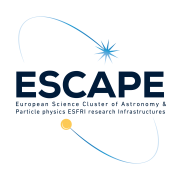 20 November 2018 – As an ESFRI research infrastructure for neutrino astronomy and particle physics, KM3NeT actively participates in the new ESCAPE science cluster that will address Open Science data challenges shared by the participating European large research infrastructures for astronomy and particle physics. Early 2019, ESCAPE will be launched officially. Read the press release and the project summary.
20 November 2018 – As an ESFRI research infrastructure for neutrino astronomy and particle physics, KM3NeT actively participates in the new ESCAPE science cluster that will address Open Science data challenges shared by the participating European large research infrastructures for astronomy and particle physics. Early 2019, ESCAPE will be launched officially. Read the press release and the project summary.
The European Union member states, recognising the challenges of data driven research in pursuing excellent science, have launched the European Open Science Cloud (EOSC) initiative.
EOSC is a cloud for research data in Europe allowing for universal access to data through a single online platform. EOSC will federate existing resources across national data centres, e-infrastructures and research infrastructures allowing researchers and citizens to access and re-use data produced by other scientists. EOSC success is based on continuous engagement with scientific stakeholders actively supporting its implementation and in their respective capacities.
ESCAPE (European Science Cluster of Astronomy & Particle physics ESFRI research infrastructures) aims to address the Open Science challenges shared by ESFRI facilities (CTA, ELT, EST, FAIR, HL-LHC, KM3NeT, SKA) as well as other pan-European research infrastructures (CERN, ESO, JIV-ERIC, EGO-Virgo) in astronomy and particle physics research domains.
The complexity of all this new apparatus in science grows rapidly, the data volume produced by them is seeing a tremendous increase and the software to analyse the data is becoming more and more complex. On the other hand, this data should be accessible to the growing scientific communities, as they collaborate and interact. The ESCAPE project brings together partners from astronomy and particle physics to collaborate on building the EOSC. The ESCAPE actions aim at delivering solutions to ensure integration of data, tools, services and scientific software; to foster common approaches to implement open-data stewardship; to establish interoperability within EOSC as an integrated multi-probe facility for fundamental science.

